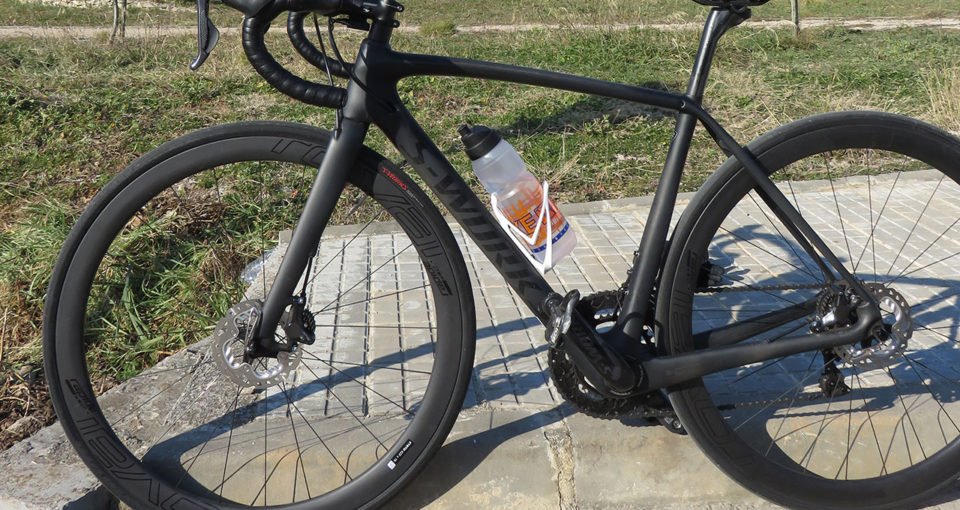Testride: 2015 Specialized Tarmac S- Works Disc
Craig Fellers, May 21, 2015

Utterly breathtaking. But that should not come as a surprise to anybody. It is the flagship road bike form the Northern California company that has become the gold standard the cycling industry. Specialized proves once again that it is defining the forefront of innovation and design while other scramble to catch up.
The new Specialized Tarmac still manages to catch your eye, even with its matte black paint black lettering, black saddle and black bar tape. I venture a guess that even a bicycle novice would easily pick this out of a lineup as the premium product. While in the midst of an 80’s neon revival craze, the dark Tarmac offers only a glisten from is metallic brake rotors. Wait, metallic brake rotors? Since when do road bikes have brake rotors? Since 2014, Specialized has been integrating hydraulic disc brakes onto many of their road bikes. Now that bike weights have dropped well below the weight limit set forth by the Union Cycliste Internationale (UCI) for world tour racing, a few extra grams to gain phenomenal stopping power has become a worthy trade. It just makes sense and Specialized does not hesitate to challenge the status quo. The S-Works Tarmac utilizes the latest 11r carbon fiber frame construction and layup producing a nimble bike that dances beneath your feet.
If you didn’t want one yet, Specialized decided to further entice you by coupling the S- Works model with Dura Ace Di-2 electronic shifting. In my years of racing, this was the first time I had the pleasure of riding electronic. For me, even a finely tuned cable front derailleur always seems to behave a bit like an old Beagle. You tell it where to go and it moves in that direction just enough to let you know that it hears you but decided to ignore your request. The electric Dura Ace groupset, on the other hand is fast, powerful and precise. The moment you touch the shifter, the chain slides smoothly and precisely into gear unleashing the full potential of your 11-speed cassette.
Now, I just happened to be picking up my Tarmac at a shop called ProBike on the North West corner of Barcelona, which was a perfect launch pad for some amazing European riding. The sub 15 pound bike seems to have a will of its own aiming towards the mountains like a self-guided missile. As I hit the base of the climb, I prepared for a potentially precarious situation: the front derailleur shift. Will the chain do as bidden, or plummet down between my crank arm and bottom bracket. With the Di-2, however, there is no doubt. With a light whirring sound, the chain floats effortlessly and precisely onto the 39. I don’t even have to let off the power as I feel my cadence skip upwards. That was amazing. I shift back to the 53 just so I can re-shift back into my 39 again. As the grade steepens, I get out of the saddle, and I feel the power transfer through the ultra-stiff S-Works Cranks with no give from the high-modulus carbon S-Works frame. It is now that I realize that I am truly on a climbing machine.
Although the brake hood appears to be standard, hidden under the rubber is a hydraulic reservoir, which powers the sleek disc brakes. The lever has a bit more throw than I expected, but when the brake begins to engage, there is no slop. It is a smooth, linear deceleration with endless power. Even though it was my first time riding road discs, I was instantly comfortable hurtling down the one lane road into tight corners. I had complete confidence in the hydraulic brakes and they consistently slowed the bike well before I was expecting allowing me to push deeper into each turn. The S-Works Tarmac was transforming the snow dusted Cava vineyards of Barcelona into a cyclist’s playground.
By the time I got back to ProBike, I had a smile glued onto my face. While I have ridden a lot of great bicycles in my time, this was on every level the best bike I have experienced.
Craig Fellers is based out of Santa Cruz where he is the owner and optometrist at Midtown Optometry.